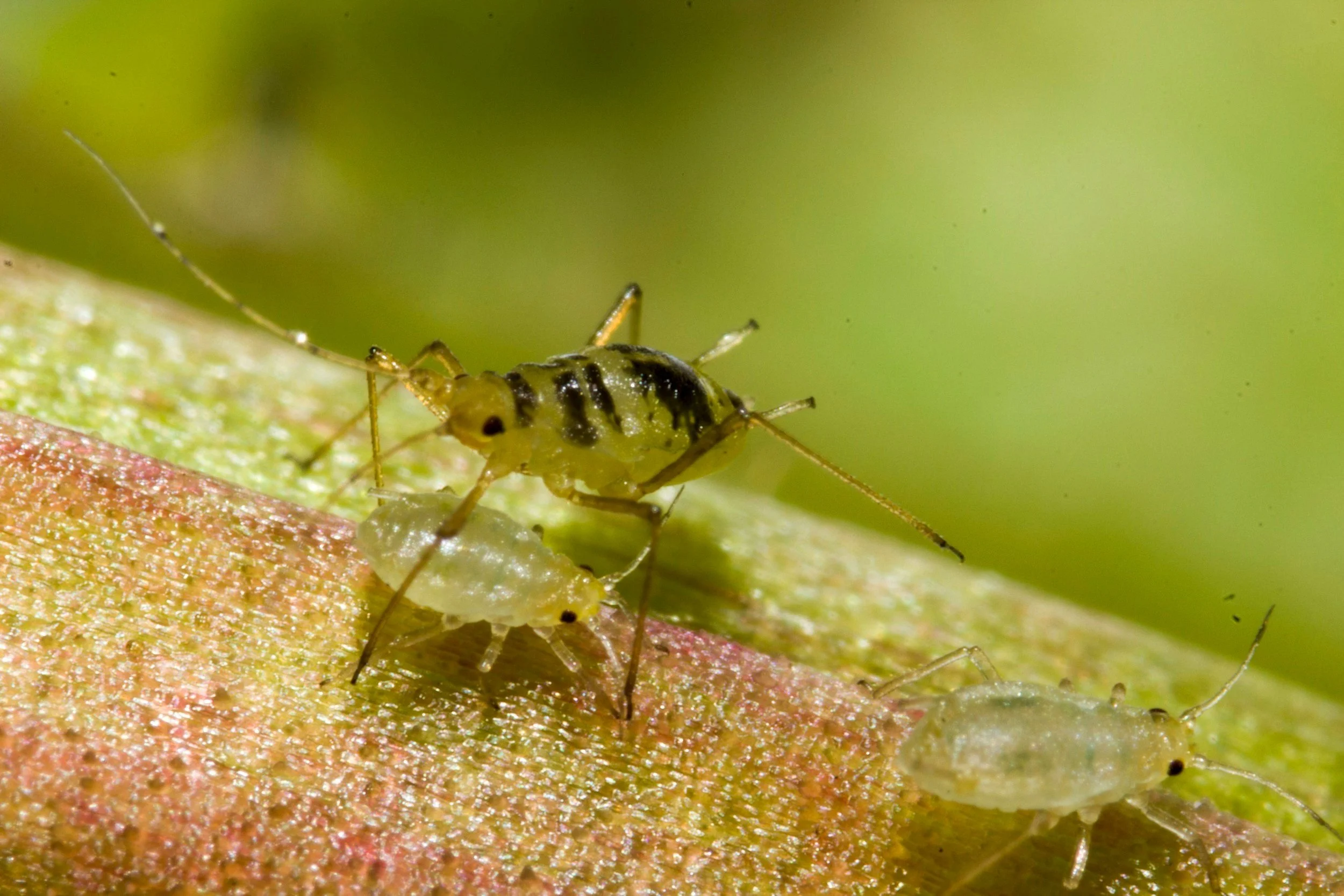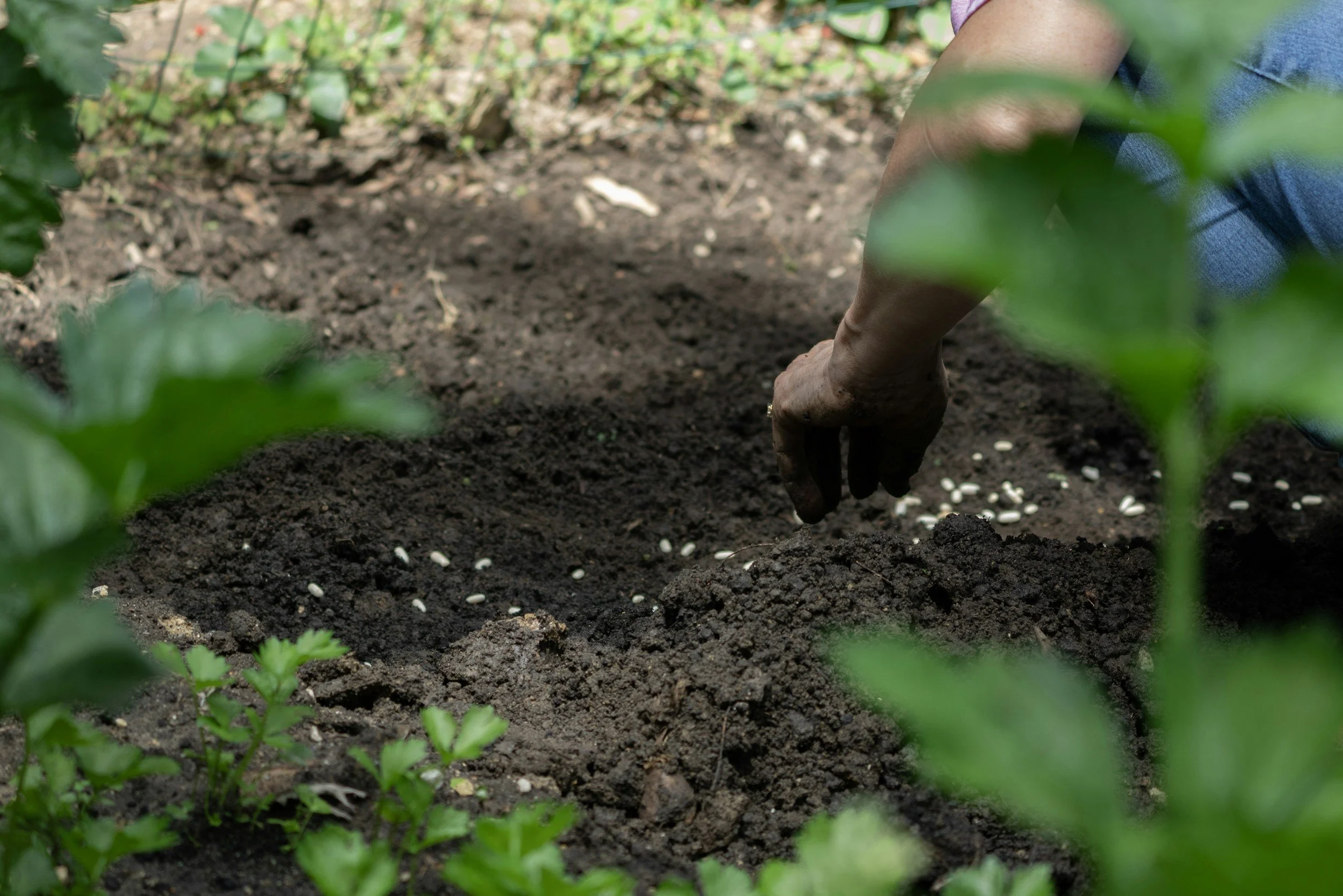What Works Against Japanese Beetles? Research-Backed Tips for Gardeners
/If you've spent any time in the garden during mid-summer, you may have encountered the shiny, copper-green menace known as the Japanese beetle. These invasive pests can quickly turn your thriving vegetable patch or flower bed into a buffet of chewed up leaves and skeletonized foliage.
Controlling Japanese beetles can feel like a losing battle, especially if you're committed to growing organically or maintaining a pollinator-friendly garden. Fortunately, science offers us several practical, research-backed solutions that don’t involve resorting to harsh chemicals. In this article, we’ll look at what actually works — according to agricultural research and university extension programs — and what doesn’t, so you can protect your garden with confidence and careful attention to how your treatment attempts affect the surrounding environment.
Meet the Japanese Beetle
The Japanese beetle (Popillia japonica) was first discovered in the U.S. over a century ago and has since become one of the most destructive garden pests in the eastern and midwestern states. These beetles are known for their voracious appetite, targeting more than 300 plant species including roses, grapes, beans, corn, apples, and birch trees.
To understand how to control them, it helps to know their life cycle:
Eggs are laid in moist soil during midsummer.
Larvae (grubs) hatch and feed on grass roots underground in late summer and fall.
Pupae form in the soil and overwinter.
Adults emerge in early summer (typically late June through August), mate, and feed on foliage for 4–6 weeks.
This seasonal pattern means that Japanese beetles cause visible damage above ground during the adult stage, but also harm your lawn and garden below ground as grubs.
Why Conventional Insecticides Aren’t the Best Answer
While it might be tempting to grab a bottle of insecticide at the first sight of beetles, most broad-spectrum insecticides offer limited relief and may do more harm than good. Many of these chemicals must be reapplied frequently, harm beneficial insects (including bees and butterflies), and contribute to pesticide resistance.
Neem oil, often thought of as a natural solution, also carries some risks. Although it can disrupt beetle feeding and reproduction, neem can be harmful to some pollinators if sprayed during the daytime while they are active. If you choose to use neem, the safest approach is to spray in the early evening, once pollinators have stopped visiting flowers.
What Science Says Does Work
Instead of relying on chemical sprays, gardeners can take a more sustainable approach by using manual, biological, and cultural methods—strategies backed by years of research.
1. Manual Removal
Yes, it’s as low-tech as it sounds: picking beetles off by hand. This is surprisingly effective, especially if done early in the morning when beetles are sluggish. Drop them into a bucket of soapy water to kill them.
According to Colorado State University’s College of Agricultural Sciences, consistent hand-picking over several days can significantly reduce beetle populations. In smaller gardens or raised beds, this can be one of the simplest and most immediate solutions.
2. Beneficial Nematodes and Milky Spore
To stop the next generation of beetles, target them in the grub stage with biological controls.
Beneficial nematodes, especially Heterorhabditis bacteriophora, are microscopic roundworms that parasitize and kill beetle grubs in the soil. They work best when applied in late summer, when grubs are actively feeding close to the surface (Rutgers NJAES Cooperative Extension).
Milky spore disease (Paenibacillus popilliae) is a naturally occurring bacterium that infects Japanese beetle grubs. Once introduced into the soil, it can remain effective for years, although it may take 2–3 seasons to fully establish. It’s most effective in areas with consistently warm summers and well-drained soil.
Both methods are safe for people, pets, and pollinators.
3. Encourage Natural Predators
A number of beneficial insects help control Japanese beetle populations, especially during the larval and adult stages. These include:
Tachinid flies, which lay eggs on adult beetles. The fly larvae then feed internally, killing the beetle host (University of Kentucky Entomology).
Tiphiid wasps, which parasitize the grubs in the soil.
Birds like starlings and robins may also feed on beetles and grubs, though their effectiveness varies.
Planting native flowers, providing water sources, and reducing pesticide use can help support these natural predators in your garden.
What Doesn’t Work (or Might Make Things Worse)
While it’s important to know what works, it’s just as valuable to understand what to avoid.
Japanese Beetle Traps
Those yellow, sweet-smelling traps you see at garden centers may seem like a good idea—but they usually backfire. Research from the USDA found that these traps attract more beetles than they capture, increasing damage to nearby plants.
Broad-Spectrum Pesticides
As mentioned earlier, these products harm more than just beetles. They can kill bees, butterflies, ladybugs, and even soil microbes. This not only disrupts your garden’s natural balance but can create new pest problems down the line.
Cultural Controls: Changing Your Gardening Practices
Cultural controls are a science-based way to prevent pest outbreaks by adjusting how you garden. Here are some effective techniques specific to Japanese beetles:
Plant Beetle-Resistant Species
Avoid planting Japanese beetle favorites like linden trees, roses, grapes, and basil unless you're prepared to monitor them closely. Instead, opt for resistant plants such as:
Lilac
Boxwood
Forsythia
Dogwood
Ornamental grasses
Rotate Crops and Diversify Plantings
Rotating where you plant susceptible crops can help reduce beetle buildup in the soil. Diverse plantings also confuse pests and attract beneficial insects.
Reduce Soil Moisture in Late Summer
Female beetles prefer moist soil when laying eggs. Cutting back on irrigation in July and August (without stressing your plants) may reduce grub numbers.
Use Trap Crops with Caution
Planting a trap crop—like a rosebush or hibiscus—at the edge of your garden can attract beetles away from key crops. But you must be vigilant in removing the beetles from the trap crop daily to prevent further spread.
Integrated Pest Management (IPM): A Holistic Solution
The most effective approach to Japanese beetles is one that combines multiple methods. Integrated Pest Management (IPM) relies on monitoring pest activity, using physical and biological controls, and only resorting to targeted treatments when absolutely necessary.
Here’s what an IPM strategy might look like in your garden:
Monitor your plants daily during peak beetle season (late June–August).
Hand-pick beetles in the early morning.
Use beneficial nematodes or milky spore to target grubs in the soil.
Support beneficial insects with flowering native plants and pollinator habitats.
Avoid chemical pesticides that harm bees and other helpful insects.
IPM is not a quick fix, but it’s a long-term solution that protects both your garden and the environment.
Final Thoughts
Japanese beetles are persistent, but they’re not unbeatable. With a bit of knowledge, some well-timed interventions, and a commitment to eco-friendly gardening, you can protect your plants and keep beetle damage to a minimum. Science shows us that sustainable methods work, and they don’t have to come at the expense of the bees, butterflies, and soil life that make your garden thrive.
Interested in learning more about environmentally-friendly methods to manage pests and grow a thriving garden? My 2-hour course, The Edible Food Garden, offers clear, research-backed guidance to help you avoid common mistakes and grow healthier plants — without relying on harmful chemicals.
You may also be interested in…









































Tomatoes are one of the most popular crops for gardeners to grow in the warm season. With over 10,000 varieties available globally, tomatoes offer a wealth of taste profiles and growing options. While growing tomatoes is fairly easy, even for beginner gardeners, these plants are heavy feeders and need regular, consistent watering to avoid developing problems like blossom end rot. Tomato plants are also attractive to a variety of insect pests, including aphids, whiteflies, and tomato hornworms, which may frustrate new and experienced gardeners alike.